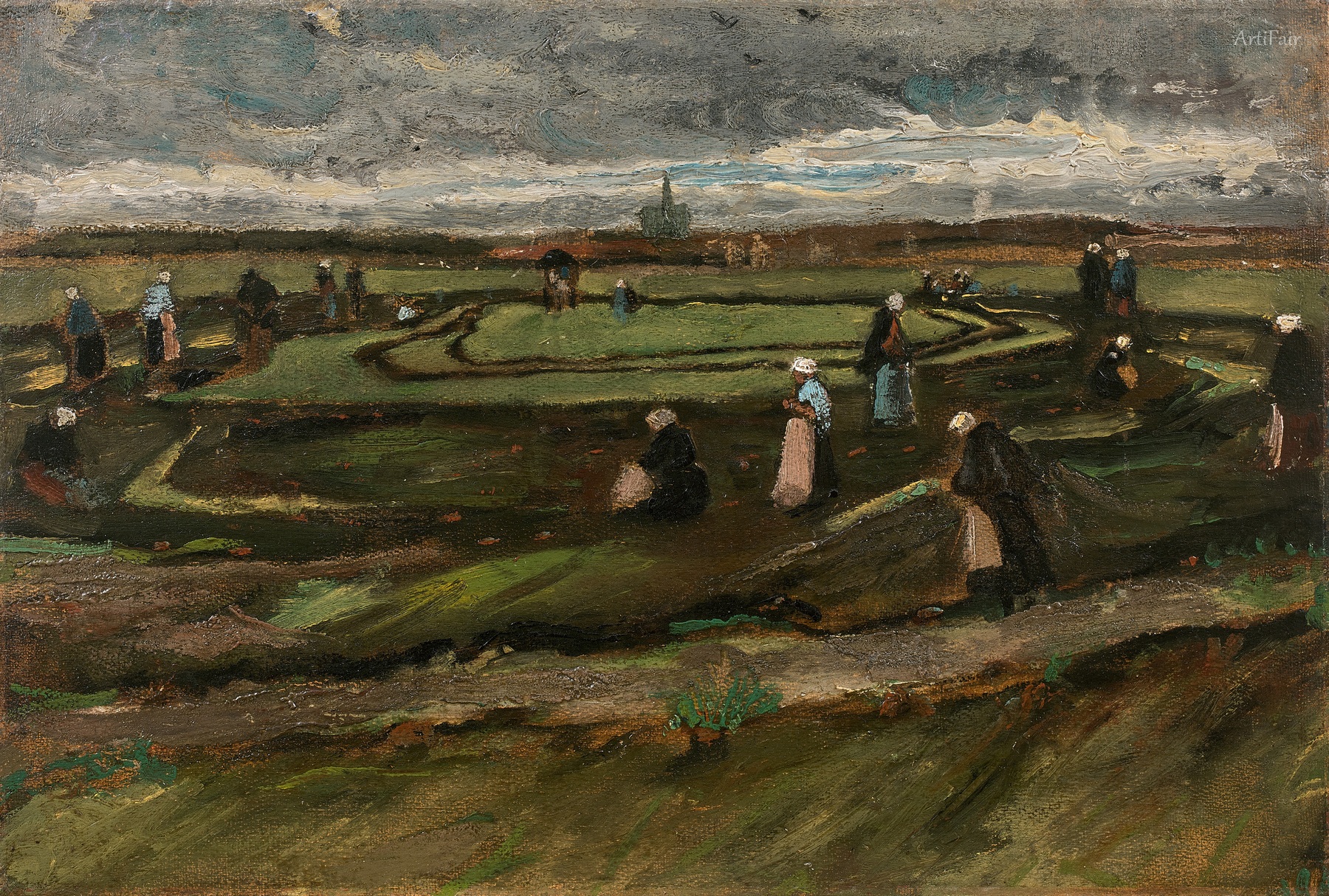
Art Appreciation
In this evocative scene, a collective of women labor diligently in the fields, their figures small yet significant against the vast, earthy landscape. The winding lines created by the plowed earth lead the eye through the painting, almost mimicking the rhythm of the women's movements as they methodically gather and prepare the soil. The dark, moody skies above, touched with hints of blue and amber, suggest a changeable atmosphere, perhaps reflecting the uncertainty of nature and labor. Each figure is captured with swift, confident strokes that reveal the artist's admiration for their endurance, their skirts brushing against the ground, rugged yet graceful. The painting pulses with energy—the viewer can almost hear the sounds of the land being tilled and feel the camaraderie shared among these workers.
Van Gogh's choice in color is particularly notable; earthy tones dominate the piece, with deep greens and rich browns embodying the fertile ground, while the vibrant details of the figures' clothing stand out like petals amidst the soil. This contrast invites reflection on the hard yet essential work of everyday life. The historical context of the late 19th century—when rural economies were heavily dependent on manual labor—adds a layer of depth to the narrative, reminding us of the often-overlooked contributions of women in agriculture. Here, Van Gogh immortalizes their toil, channeling both his respect and empathy, inviting us to appreciate their perseverance in the face of a tumultuous sky that looms over their diligent work.